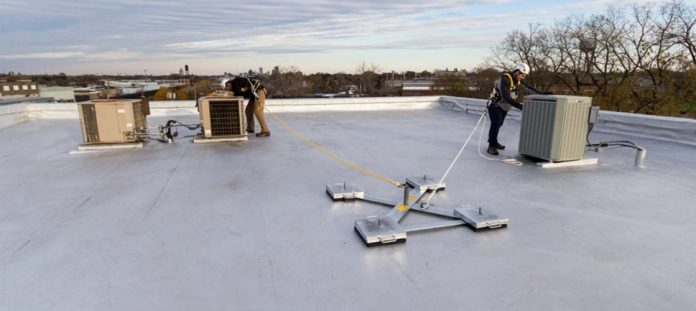The roof fall protection anchors are the most important factors of any roofing construction job. The Roof fall protection program aims to ensure that all construction and roofing workers use the necessary equipment and take appropriate safety precautions. In addition, any organisation must ensure that its employees are secure from falling. Since collapses are among the most common causes of mortality in the building and business, following precautions is essential for a successful and safe project. Most roofing incidents resulting in harm or death can be bypassed if your business or contracting work has a comprehensive fall protection safety program. Continue reading as we discuss ways to keep yourself and your coworkers safe from injuries caused by falling off a roof.
In a Fall Protection System, What Is An Anchor?
A fall protection system would not be complete without an anchor. The anchor is usually a specially designed and installed item that is used to link to and fully support a fall protection system. Workers will attach their lanyard or lifeline to an anchor using a fall protection system. A secure connection point for a fall protection system is called anchorage.
Anchors must be of the correct type for the job and properly installed. The roof anchor is the most popular type of permanent window cleaning and fall protection equipment. Roof anchors can be used for a variety of purposes. Roof anchors can be used independently or with other permanent equipment, including davits, rigging sleeves, horizontal lifelines, and outrigger beams. They’re part of a fall protection system that prevents a person from colliding with the earth if they fall from a great height.
Roofers’ Fall Protection Violations 101
Construction and Roofer workers operate in hazardous environments. Consequently, their working conditions are substantially riskier than those of other vocations. Therefore, although specific projects are less dangerous than others, fall protection should always be used.
OSHA has set rigorous safety rules and recommendations for construction and roofers workers because falls are one of the major causes of occupational injury and death. These restrictions are in place to keep workers safe on the job. Although OSHA has safety laws in place for workers and businesses, workers frequently descend and are hurt. Therefore, if a company or organization does not have a solid fall prevention safety policy, they should do so immediately to avoid injury, death, or OSHA violations.
The following are the most common roofer fall protection violations:
- Uneven surfaces
- Wet surfaces
- Ladders that haven’t been set up properly
- Ladders that are broken or defective
- Poor illumination and overcrowding in the workplace
- Whether that is threatening
- Failure to protect the head, face, and other vulnerable parts in the event of a fall
- The failure to appoint a safety monitor is a severe mistake.
- There aren’t enough protections on the belts and pulleys.
The majority of fall protection failures are caused by human error. Workers may, for example, use defective ladders, abuse ladders, rush through safety procedures, forget to employ appropriate equipment, or make other faults.
What Are the Benefits of Fall Protection for Roofers?
Businesses and organizations can establish a successful safety strategy with entry to superior roofer safety supplies and OSHA roof fall prevention rules. Since roofing has so many variables, everything might go wrong in a split second; roofers and construction workers need fall protection protocols. Tripping on roofing materials, Severe weather, uneven sheathing, and wet surfaces are all conditions that can result in a fall if employees are not adequately protected.
So, when is fall prevention on a roof required? Not every project needs the use of fall safety equipment, but most roof projects do. According to OSHA, businesses must supply fall protection resources for projects that disclose workers to 6 feet or more falls.
We prefer to build fall protection anchors first because we never want a worker to be in danger of falling if it can be avoided. So get in touch with our friendly team today for assistance!


